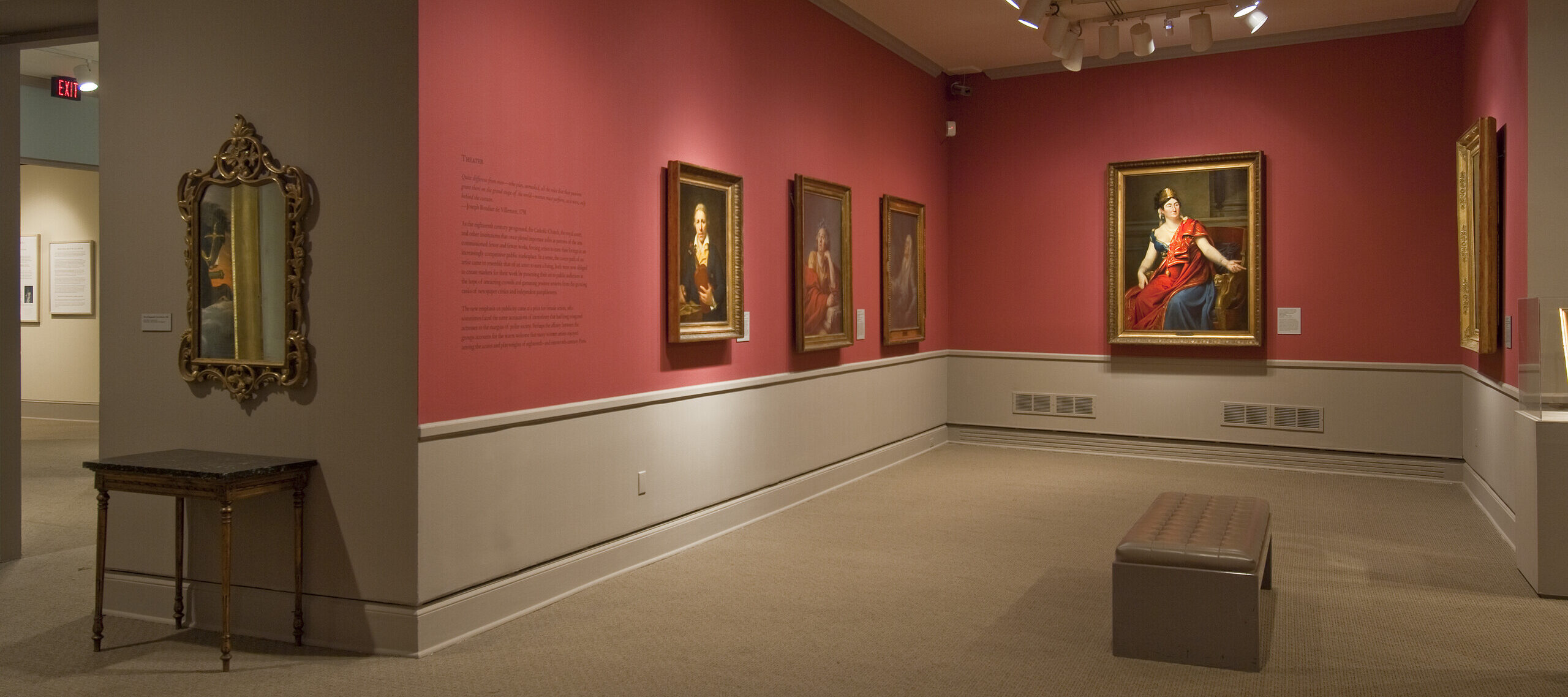In Royalists to Romantics: Women Artists from the Louvre, Versailles, and Other French National Collections, 77 works by 35 artists display the talents of French Revolution-era women artists. Their paintings are windows into their careers and the singular challenges of their time. The catalogue that NMWA has published to illustrate Royalists to Romantics includes essays as well as individual artist biographies that give insight into the lives of women artists working in France between 1750 and 1848. This excerpt explores the life of one the show’s featured artists, Marie-Amelie Cogniet.

Marie-Amelie Cogniet studied and worked with her brother, Leon (1794–1880), a Rome Prize–winner who produced portraits, genre scenes, and history paintings.¹ Like his contemporary Eugene Delacroix (1798–1863), a leading figure in the French Romantic movement, Leon developed an affinity for exotic narratives of the Middle East, often taken from English literature or the reports of Napoleonic expeditions, rendered on canvas in a brushy, coloristic style.
Amelie Cogniet made her Salon debut in 1831 with five paintings that revealed the breadth of her abilities. In addition to a portrait and a kitchen scene, she displayed two works on military themes: a bivouac and an image of Ali-Hamet, described in the livret as an “Egyptian, former Mameluk of the Imperial Guard, wounded twice on July 28 while fighting with the Parisians.”² Cogniet’s Studio Interior, included in this exhibition, was also on view in the 1831 Salon. Leon, an active teacher, maintained two studios in Paris throughout his career. In 1831 his atelier for male students, which he oversaw, was located at 9, rue Grange-aux- Belles, near the canal Saint-Martin, and his studio for women, supervised by Amelie, was situated at 50, rue des Marais-Saint-Martin.³ This painting appears to depict Leon’s atelier; the only woman present is believed to be a self-portrait of Amelie.⁴
Amelie Cogniet went on to participate in six additional Salon exhibitions between 1833 and 1843, with portraiture constituting the bulk of her work on view. She won a second-class medal in 1833. In 1838 she received commissions from the Maison du roi to copy two royal portraits; in one case, the portrait of Eugenie-Adelaide-Louise d’Orleans (1777–1848), the original was painted by her brother. Both of these paintings remain in the collection of the Musee national des chateaux deVersailleset de Trianon.⁵
Notes
1. Emile Bellier de la Chavignerie, Dictionnaire général des artistes de l’école française depuis l’origine des arts du dessin jusqu’à nos jours: Architectes, peintres, sculpteurs, graveurs et lithographes (Paris, 1882), vol. 1, p. 272.
2. Explication des ouvrages de peinture, sculpture, gravure, lithographie et architecture exposés au Musée royal le 1ER mai 1831 (Paris, 1831), p. 28: “egyptien, ancient mameluck de la garde imperiale, blesse deux fois le 28 juillet en combattant avec les Parisiens.”
3. The addresses are given in ibid. and in Charles Gabet, Dictionnaire des artistes de l’école française, au xixE siècle (Paris, 1831), p. 154.
4. See Alexandra K. Wettlaufer, Portraits of the Artist as a Young Woman: Painting and the Novel in France and Britain, 1800–1860 (Columbus, 2011), p. 276, n. 34.
5. Claire Constans, Musée national du château de Versailles: Les peintures, introduction by Jean-Pierre Babelon (Paris, 1995), vol. 1, pp. 170–71.

